Design, Development, and Experimental Verification of a Trajectory Algorithm of a Telepresence Robot
Abstract
Featured Application
Abstract
1. Introduction
- Specify the initial and final conditions, such as the vehicle’s starting position, orientation, and velocity, and the desired final position, orientation, and velocity.
- Definition of constraints and objectives, such as the maximum steering angle of the wheels, the allowable acceleration and deceleration, and the optimization criteria.
- Generation of a candidate trajectory that satisfies the constraints and objectives, using techniques such as model predictive control, polynomial curve fitting, or optimization algorithms.
- Evaluation and refinement of the trajectory, considering factors such as tire slip, lateral and longitudinal forces, and vehicle dynamics.
- Execution of the trajectory, using a feedback control system to track the planned trajectory and adjust for any deviations or disturbances.
- In trajectory planning with Ackermann steering, it is important to consider the steering system’s limitations and constraints, such as the maximum steering angle and the turning radius. The trajectory planning algorithm must ensure that the vehicle can follow the planned trajectory without exceeding these limits or causing any instability or loss of control.
- Overall, trajectory planning with Ackermann steering is a complex process that requires a deep understanding of vehicle dynamics, control theory, and optimization algorithms. It is an important tool for achieving accurate and efficient motion control in autonomous vehicles, robotic systems, and other applications requiring precise and agile motion.
2. Background
3. System Design and Implementation
3.1. Trajectory Planning (Clockwise)
| Algorithm 1 Selection of Trajectory (Smallest Length) | ||
| 1: | Given the coordinates and the orientation of the starting point , and and the target point , and , in addition to moving the curve, the radius is given. Steps 1 through 5 must be carried out for both a left turn and a right turn. The upper operator describes the case of multiple operators and the equation for a curve to the left, and the bottom one is the equation for a right turn, | |
| 2: | Determination of the circle center of the circle, starting with the coordinates . | |
| (17) | ||
| (18) | ||
| 3: | Determination of the center of the goal circle with coordinates . | |
| (19) | ||
| 4: | Determination of the vector connecting the coordinates , and between the two circle center points and , and its magnitude and direction. | |
| (20) | ||
| (21) | ||
| (22) | ||
| (23) | ||
| 5: | Determination of the exit point from the start circle with coordinates , and of the entry point into the goal circle with coordinates . | |
| (24) | ||
| (25) | ||
| (26) | ||
| (27) | ||
| 6: | Determination of the trajectory length . | |
| (28) | ||
| 7: | Selection of the trajectory with the smallest length | |
3.2. Trajectory Planning (Counterclockwise)
| Algorithm 2 Trajectory (for both directions of rotation) | ||
| 1: | The coordinates and the orientation of the starting point , , and and the target point , and are given. In addition, the curve radius to be driven is given. Steps 1 to 6 must be carried out for both a left/right turn and a right/left turn. In the case of multiple operators, the upper operator describes the equation for a left/right curve, while the lower one describes the equation for a right/left curve, | |
| 2: | Determination of the center of the starting circle with the coordinates and . | |
| (37) | ||
| (38) | ||
| 3: | Determination of the center of the goal circle with the coordinates . | |
| (39) | ||
| 4: | Determination of the vector connecting the coordinates , and between the two circle center points and , and its magnitude and direction. | |
| (40) | ||
| (41) | ||
| (42) | ||
| (43) | ||
| 5: | If the result for the angle is not real, the calculation for the given direction of rotation can be aborted here, since the problem cannot be solved. | |
| (44) | ||
| Determination of the angles and , as well as the normal vector with the coordinates and . | ||
| (45) | ||
| (46) | ||
| (47) | ||
| 6: | Determination of the exit point from the starting circle with the coordinates and , and the entry point in the target circle with the coordinates and , as well as the distance between the two points. | |
| (48) | ||
| (49) | ||
| (50) | ||
| (51) | ||
| (52) | ||
| 7: | Step 6: Determination of the trajectory length (quality criterion). | |
| (53) | ||
| 8: | Selecting the trajectory with the smallest length . | |
4. Hardware Implementation
4.1. State Control Level
4.1.1. Manual Operation
4.1.2. Trajectory Mode
4.2. Constant of Proportionality
5. Results and Discussion
5.1. Driving Straight Ahead
5.2. Right Turn
5.3. Self-Localization
6. Conclusions
Author Contributions
Funding
Institutional Review Board Statement
Informed Consent Statement
Data Availability Statement
Acknowledgments
Conflicts of Interest
References
- Dai, Y.; Xiang, C.; Zhang, Y.; Jiang, Y.; Qu, W.; Zhang, Q. A Review of Spatial Robotic Arm Trajectory Planning. Aerospace 2022, 9, 361. [Google Scholar] [CrossRef]
- Hirzinger, G.; Brunner, B.; Dietrich, J.; Heindl, J. ROTEX-the First Remotely Controlled Robot in Space. In Proceedings of the 1994 IEEE International Conference on Robotics and Automation, San Diego, CA, USA, 8–13 May 1994; IEEE: Piscataway, NJ, USA, 1994; pp. 2604–2611. [Google Scholar]
- Luo, J.; Yu, M.; Wang, M.; Yuan, J. A Fast Trajectory Planning Framework with Task-Priority for Space Robot. Acta Astronaut. 2018, 152, 823–835. [Google Scholar] [CrossRef]
- Menasri, R.; Nakib, A.; Daachi, B.; Oulhadj, H.; Siarry, P. A Trajectory Planning of Redundant Manipulators Based on Bilevel Optimization. Appl. Math. Comput. 2015, 250, 934–947. [Google Scholar] [CrossRef]
- Guillén-Climent, S.; Garzo, A.; Muñoz-Alcaraz, M.N.; Casado-Adam, P.; Arcas-Ruiz-Ruano, J.; Mejías-Ruiz, M.; Mayordomo-Riera, F.J. A Usability Study in Patients with Stroke Using MERLIN, a Robotic System Based on Serious Games for Upper Limb Rehabilitation in the Home Setting. J. Neuroeng. Rehabil. 2021, 18, 41. [Google Scholar] [CrossRef] [PubMed]
- Karimi, M.; Roncoli, C.; Alecsandru, C.; Papageorgiou, M. Cooperative Merging Control via Trajectory Optimization in Mixed Vehicular Traffic. Transp. Res. Part C Emerg. Technol. 2020, 116, 102663. [Google Scholar] [CrossRef]
- Kitazawa, O.; Kikuchi, T.; Nakashima, M.; Tomita, Y.; Kosugi, H.; Kaneko, T. Development of Power Control Unit for Compact-Class Vehicle. SAE Int. J. Altern. Powertrains 2016, 5, 278–285. [Google Scholar] [CrossRef]
- Rodríguez-Lera, F.J.; Matellán-Olivera, V.; Conde-González, M.Á.; Martín-Rico, F. HiMoP: A Three-Component Architecture to Create More Human-Acceptable Social-Assistive Robots. Cogn. Process. 2018, 19, 233–244. [Google Scholar] [CrossRef]
- Narayan, P.; Wu, P.; Campbell, D.; Walker, R. An Intelligent Control Architecture for Unmanned Aerial Systems (UAS) in the National Airspace System (NAS). In Proceedings of the AIAC12: 2nd Australasian Unmanned Air Vehicles Conference; Waldron Smith Management: Bristol, UK, 2007; pp. 1–12. [Google Scholar]
- Laengle, T.; Lueth, T.C.; Rembold, U.; Woern, H. A Distributed Control Architecture for Autonomous Mobile Robots-Implementation of the Karlsruhe Multi-Agent Robot Architecture (KAMARA). Adv. Robot. 1997, 12, 411–431. [Google Scholar] [CrossRef]
- de Oliveira, R.W.; Bauchspiess, R.; Porto, L.H.; de Brito, C.G.; Figueredo, L.F.; Borges, G.A.; Ramos, G.N. A Robot Architecture for Outdoor Competitions. J. Intell. Robot. Syst. 2020, 99, 629–646. [Google Scholar] [CrossRef]
- Atsuzawa, K.; Nilwong, S.; Hossain, D.; Kaneko, S.; Capi, G. Robot Navigation in Outdoor Environments Using Odometry and Convolutional Neural Network. In Proceedings of the IEEJ International Workshop on Sensing, Actuation, Motion Control, and Optimization (SAMCON), Chiba, Japan, 4–6 March 2019. [Google Scholar]
- Cuesta, F.; Ollero, A.; Arrue, B.C.; Braunstingl, R. Intelligent Control of Nonholonomic Mobile Robots with Fuzzy Perception. Fuzzy Sets Syst. 2003, 134, 47–64. [Google Scholar] [CrossRef]
- Ahmadzadeh, A.; Jadbabaie, A.; Kumar, V.; Pappas, G.J. Multi-UAV Cooperative Surveillance with Spatio-Temporal Specifications. In Proceedings of the 45th IEEE Conference on Decision and Control, San Diego, CA, USA, 13–15 December 2006; IEEE: Piscataway, NJ, USA, 2006; pp. 5293–5298. [Google Scholar]
- Anavatti, S.G.; Francis, S.L.; Garratt, M. Path-Planning Modules for Autonomous Vehicles: Current Status and Challenges. In Proceedings of the 2015 International Conference on Advanced Mechatronics, Intelligent Manufacture, and Industrial Automation (ICAMIMIA), Surabaya, Indonesia, 15–17 October 2015; IEEE: Piscataway, NJ, USA, 2015; pp. 205–214. [Google Scholar]
- Alami, R.; Chatila, R.; Fleury, S.; Ghallab, M.; Ingrand, F. An Architecture for Autonomy. Int. J. Robot. Res. 1998, 17, 315–337. [Google Scholar] [CrossRef]
- Lee, H.; Seo, H.; Kim, H.-G. Trajectory Optimization and Replanning Framework for a Micro Air Vehicle in Cluttered Environments. IEEE Access 2020, 8, 135406–135415. [Google Scholar] [CrossRef]
- Hu, R.; Zhang, Y. Fast Path Planning for Long-Range Planetary Roving Based on a Hierarchical Framework and Deep Reinforcement Learning. Aerospace 2022, 9, 101. [Google Scholar] [CrossRef]
- Hitec HS-5745MG Servo Specifications and Reviews. Available online: https://servodatabase.com/servo/hitec/hs-5745mg (accessed on 28 November 2022).
- Optical Encoder M101|MEGATRON. Available online: https://www.megatron.de/en/products/optical-encoders/optoelectronic-encoder-m101.html (accessed on 28 November 2022).
- Zhu, H.; Brito, B.; Alonso-Mora, J. Decentralized probabilistic multi-robot collision avoidance using buffered uncertainty-aware Voronoi cells. Auton. Robot. 2022, 46, 401–420. [Google Scholar] [CrossRef]
- Batmaz, A.U.; Maiero, J.; Kruijff, E.; Riecke, B.E.; Neustaedter, C.; Stuerzlinger, W. How automatic speed control based on distance affects user behaviours in telepresence robot navigation within dense conference-like environments. PLoS ONE 2020, 15, e0242078. [Google Scholar] [CrossRef]
- Xia, P.; McSweeney, K.; Wen, F.; Song, Z.; Krieg, M.; Li, S.; Yu, X.; Crippen, K.; Adams, J.; Du, E.J. Virtual Telepresence for the Future of ROV Teleoperations: Opportunities and Challenges. In Proceedings of the SNAME 27th Offshore Symposium, Houston, TX, USA, 22 February 2022. [Google Scholar]
- Shen, S.; Michael, N.; Kumar, V. Autonomous multi-floor indoor navigation with a computationally constrained MAV. In Proceedings of the 2011 IEEE International Conference on Robotics and Automation, Shanghai, China, 9–13 May 2011; pp. 20–25. [Google Scholar]
- Dong, Y.; Pei, M.; Zhang, L.; Xu, B.; Wu, Y.; Jia, Y. Stitching videos from a fisheye lens camera and a wide-angle lens camera for telepresence robots. Int. J. Soc. Robot. 2022, 14, 733–745. [Google Scholar] [CrossRef]
- Zong, X.; Xu, G.; Yu, G.; Su, H.; Hu, C. Obstacle Avoidance for Self-Driving Vehicle with Reinforcement Learning. SAE Int. J. Passeng. Cars-Electron. Electr. Syst. 2017, 11, 30–39. [Google Scholar] [CrossRef]
- Fawad, N.; Khan, M.N.; Altalbe, A. Intelligent Time Delay Control of Telepresence Robots Using Novel Deep Reinforcement Learning Algorithm to Interact with Patients. Appl. Sci. 2023, 13, 2462. [Google Scholar]
- Estlin, T.A.; Volpe, R.; Nesnas, I.; Mutz, D.; Fisher, F.; Engelhardt, B.; Chien, S. Decision-Making in a Robotic Architecture for Autonomy. Decis.-Mak. A Robot. Archit. Auton. 2001, 2001, 92152–97383. [Google Scholar]
- Kress, R.L.; Hamel, W.R.; Murray, P.; Bills, K. Control Strategies for Teleoperated Internet Assembly. IEEE/ASME Trans. Mechatron. 2001, 6, 410–416. [Google Scholar] [CrossRef]
- Goldberg, K.; Siegwart, R. Beyond Webcams: An Introduction to Online Robots. MIT Press: Cambridge, MA, USA, 2002; ISBN 0262072254. [Google Scholar]
- Brito, C.G. de Desenvolvimento de Um Sistema de Localização Para Robôs Móveis Baseado Em Filtragem Bayesiana Não-Linear. 2017. Bachelor’s Thesis, Universidade de Bras’ılia, Brasilia, Brazil, 2018. [Google Scholar]
- Rozevink, S.G.; van der Sluis, C.K.; Garzo, A.; Keller, T.; Hijmans, J.M. HoMEcare ARm RehabiLItatioN (MERLIN): Telerehabilitation Using an Unactuated Device Based on Serious Games Improves the Upper Limb Function in Chronic Stroke. J. NeuroEng. Rehabil. 2021, 18, 48. [Google Scholar] [CrossRef] [PubMed]
- Schilling, K. Tele-Maintenance of Industrial Transport Robots. IFAC Proc. Vol. 2002, 35, 139–142. [Google Scholar] [CrossRef]
- Garzo, A.; Arcas-Ruiz-Ruano, J.; Dorronsoro, I.; Gaminde, G.; Jung, J.H.; Téllez, J.; Keller, T. MERLIN: Upper-Limb Rehabilitation Robot System for Home Environment. In Proceedings of the International Conference on NeuroRehabilitation, Online, 13–16 October 2020; Springer: Berlin/Heidelberg, Germany, 2020; pp. 823–827. [Google Scholar]
- Ahmad, A.; Babar, M.A. Software Architectures for Robotic Systems: A Systematic Mapping Study. J. Syst. Softw. 2016, 122, 16–39. [Google Scholar] [CrossRef]
- Sharma, O.; Sahoo, N.C.; Puhan, N.B. Recent Advances in Motion and Behavior Planning Techniques for Software Architecture of Autonomous Vehicles: A State-of-the-Art Survey. Eng. Appl. Artif. Intell. 2021, 101, 104211. [Google Scholar] [CrossRef]
- Ziegler, J.; Werling, M.; Schroder, J. Navigating Car-like Robots in Unstructured Environments Using an Obstacle Sensitive Cost Function. In Proceedings of the 2008 IEEE Intelligent Vehicles Symposium, Eindhoven, The Netherlands, 4–6 June 2008; IEEE: Piscataway, NJ, USA, 2008; pp. 787–791. [Google Scholar]
- González-Santamarta, M.Á.; Rodríguez-Lera, F.J.; Álvarez-Aparicio, C.; Guerrero-Higueras, Á.M.; Fernández-Llamas, C. MERLIN a Cognitive Architecture for Service Robots. Appl. Sci. 2020, 10, 5989. [Google Scholar] [CrossRef]
- Shao, J.; Xie, G.; Yu, J.; Wang, L. Leader-Following Formation Control of Multiple Mobile Robots. In Proceedings of the 2005 IEEE International Symposium on, Mediterrean Conference on Control and Automation Intelligent Control, Limassol, Cyprus, 27–29 June 2005; IEEE: Piscataway, NJ, USA, 2005; pp. 808–813. [Google Scholar]
- Faisal, M.; Hedjar, R.; Al Sulaiman, M.; Al-Mutib, K. Fuzzy Logic Navigation and Obstacle Avoidance by a Mobile Robot in an Unknown Dynamic Environment. Int. J. Adv. Robot. Syst. 2013, 10, 37. [Google Scholar] [CrossRef]
- Favarò, F.; Eurich, S.; Nader, N. Autonomous Vehicles’ Disengagements: Trends, Triggers, and Regulatory Limitations. Accid. Anal. Prev. 2018, 110, 136–148. [Google Scholar] [CrossRef]
- Gopalswamy, S.; Rathinam, S. Infrastructure Enabled Autonomy: A Distributed Intelligence Architecture for Autonomous Vehicles. In Proceedings of the 2018 IEEE Intelligent Vehicles Symposium (IV), Suzhou, China, 26–30 June 2018; IEEE, 2018; pp. 986–992. [Google Scholar]
- Allen, J.F. Towards a General Theory of Action and Time. Artif. Intell. 1984, 23, 123–154. [Google Scholar] [CrossRef]
- Hu, H.; Brady, J.M.; Grothusen, J.; Li, F.; Probert, P.J. LICAs: A Modular Architecture for Intelligent Control of Mobile Robots. In Proceedings of the 1995 IEEE/RSJ International Conference on Intelligent Robots and Systems. Human Robot Interaction and Cooperative Robots, Pittsburgh, PA, USA, 5–9 August 1995; IEEE: Piscataway, NJ, USA, 1995; Volume 1, pp. 471–476. [Google Scholar]
- Alami, R.; Chatila, R.; Espiau, B. Designing an Intelligent Control Architecture for Autonomous Robots. In Proceedings of the ICAR; 1993; Volume 93, pp. 435–440. [Google Scholar]
- Khan, M.N.; Hasnain, S.K.; Jamil, M.; Imran, A. Electronic Signals and Systems: Analysis, Design and Applications; Rivers: Gistrup, Denmark, 2022. [Google Scholar]
- Kang, J.-M.; Chun, C.-J.; Kim, I.-M.; Kim, D.I. Channel Tracking for Wireless Energy Transfer: A Deep Recurrent Neural Network Approach. arXiv 2018, arXiv:1812.02986. [Google Scholar]
- Zhao, W.; Gao, Y.; Ji, T.; Wan, X.; Ye, F.; Bai, G. Deep Temporal Convolutional Networks for Short-Term Traffic Flow Forecasting. IEEE Access 2019, 7, 114496–114507. [Google Scholar] [CrossRef]
- Schilling, K.J.; Vernet, M.P. Remotely Controlled Experiments with Mobile Robots. In Proceedings of the Thirty-Fourth Southeastern Symposium on System Theory (Cat. No. 02EX540), Huntsville, AL, USA, 19 March 2002; IEEE: Pittsburgh, PA, USA, 2002; pp. 71–74. [Google Scholar]
- Moon, T.-K.; Kuc, T.-Y. An Integrated Intelligent Control Architecture for Mobile Robot Navigation within Sensor Network Environment. In Proceedings of the 2004 IEEE/RSJ International Conference on Intelligent Robots and Systems (IROS) (IEEE Cat. No. 04CH37566), Sendai, Japan, 28 September–2 October 2004; IEEE: Pittsburgh, PA, USA, 2004; Volume 1, pp. 565–570. [Google Scholar]
- Lefèvre, S.; Vasquez, D.; Laugier, C. A Survey on Motion Prediction and Risk Assessment for Intelligent Vehicles. ROBOMECH J. 2014, 1, 1–14. [Google Scholar] [CrossRef]
- Behere, S.; Törngren, M. A Functional Architecture for Autonomous Driving. In Proceedings of the First International Workshop on Automotive Software Architecture, Montreal, QC, Canada, 4 May 2015; pp. 3–10. [Google Scholar]
- Carvalho, A.; Lefévre, S.; Schildbach, G.; Kong, J.; Borrelli, F. Automated Driving: The Role of Forecasts and Uncertainty—A Control Perspective. Eur. J. Control 2015, 24, 14–32. [Google Scholar] [CrossRef]
- Liu, P.; Paden, B.; Ozguner, U. Model Predictive Trajectory Optimization and Tracking for On-Road Autonomous Vehicles. In Proceedings of the 2018 21st International Conference on Intelligent Transportation Systems (ITSC), Maui, HI, USA, 4–7 November 2018; IEEE: Pittsburgh, PA, USA, 2018; pp. 3692–3697. [Google Scholar]
- Weiskircher, T.; Wang, Q.; Ayalew, B. Predictive Guidance and Control Framework for (Semi-) Autonomous Vehicles in Public Traffic. IEEE Trans. Control Syst. Technol. 2017, 25, 2034–2046. [Google Scholar] [CrossRef]
- Inkyu, C.; Song, H.; Yoo, J. Deep learning based pedestrian trajectory prediction considering location relationship between pedestrians. In Proceedings of the 2019 International Conference on Artificial Intelligence in Information and Communication (ICAIIC), Okinawa, Japan, 11–13 February 2019; IEEE: Pittsburgh, PA, USA, 2019; pp. 449–451. [Google Scholar]
- Liang, Z.; Liu, Y.; Al-Dubai, A.Y.; Zomaya, A.Y.; Min, G.; Hawbani, A. A novel generation-adversarial-network-based vehicle trajectory prediction method for intelligent vehicular networks. IEEE Internet Things J. 2020, 8, 2066–2077. [Google Scholar]
- Liang, Z.; Bi, Z.; Hawbani, A.; Yu, K.; Zhang, Y.; Guizani, M. ELITE: An Intelligent Digital Twin-Based Hierarchical Routing Scheme for Softwarized Vehicular Networks. IEEE Trans. Mob. Comput 2022. [Google Scholar] [CrossRef]

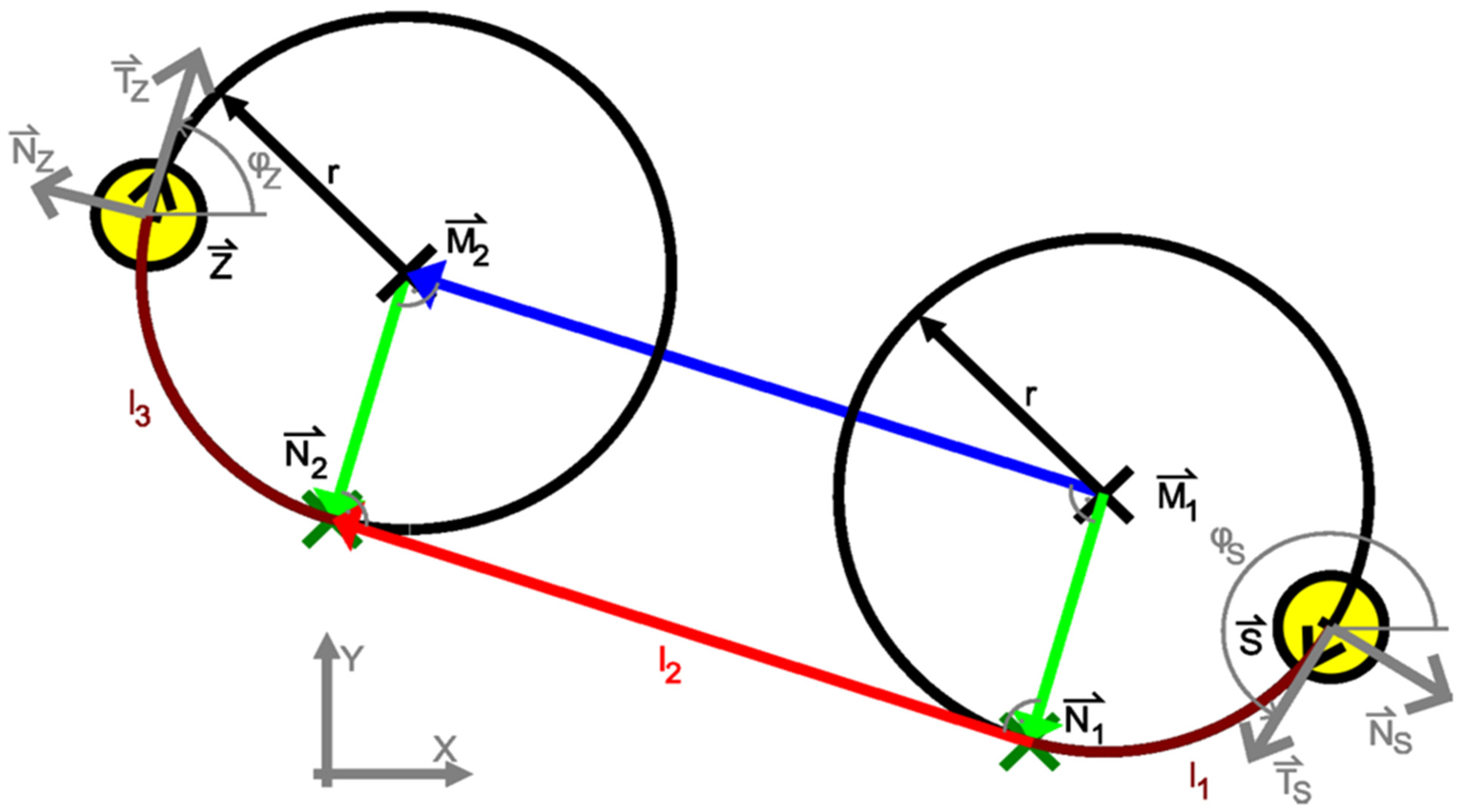
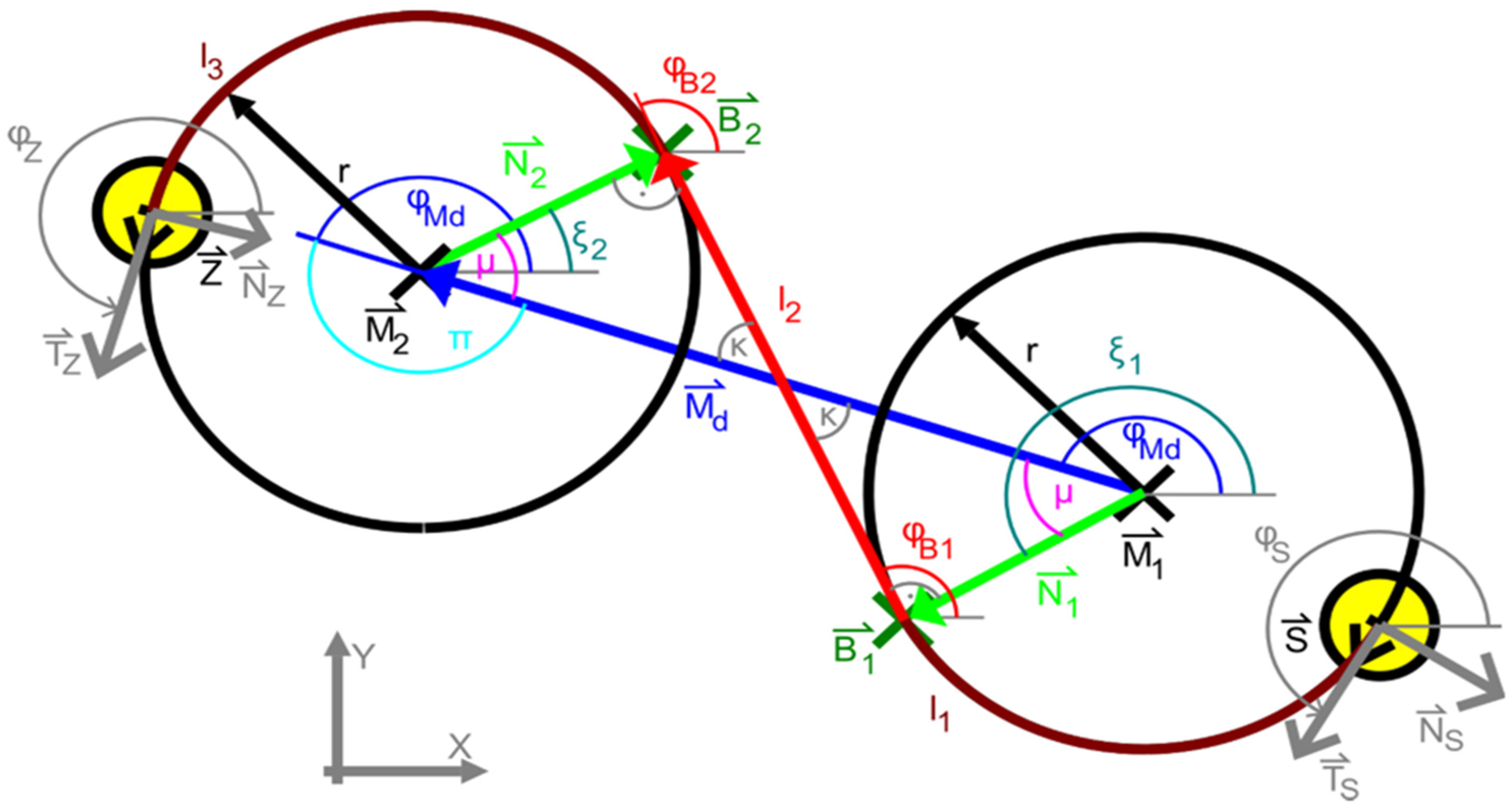

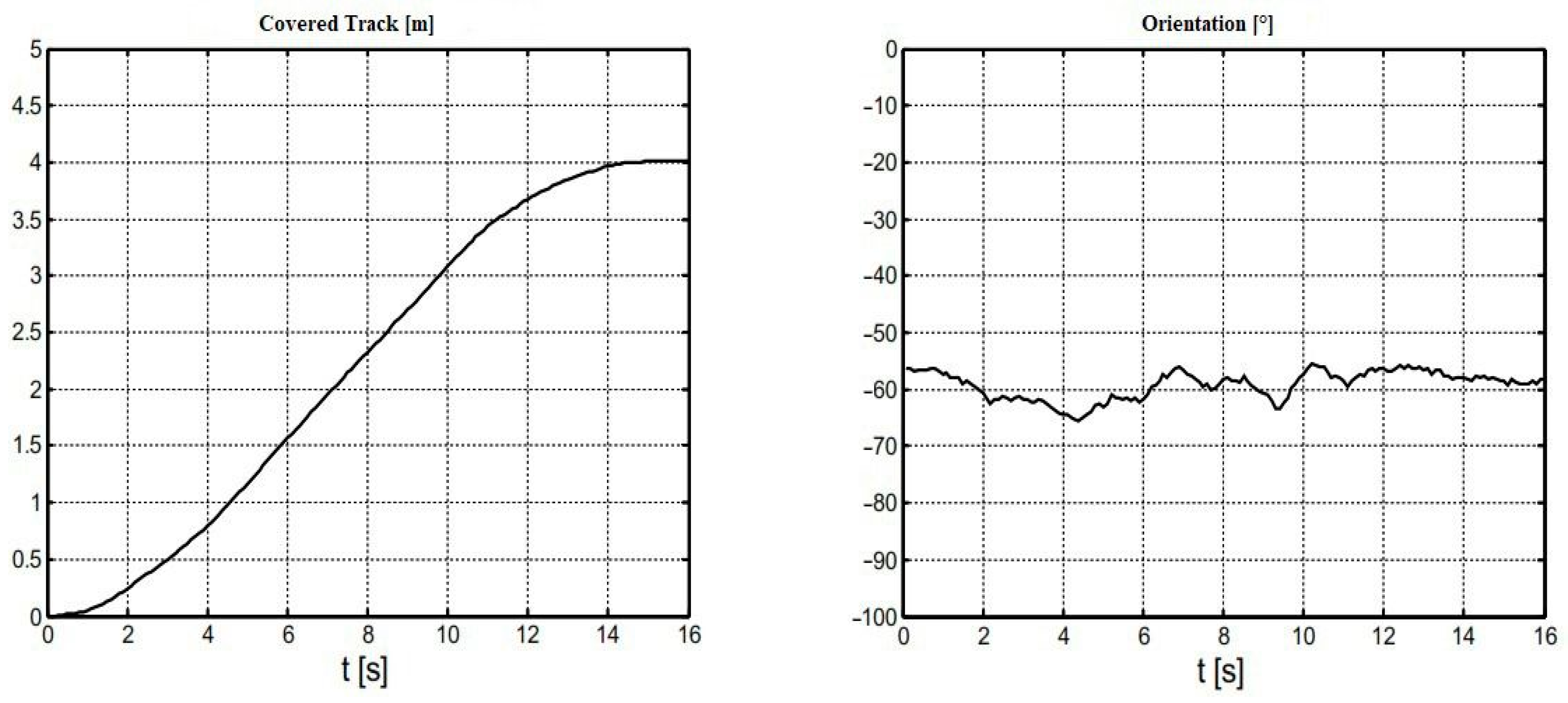
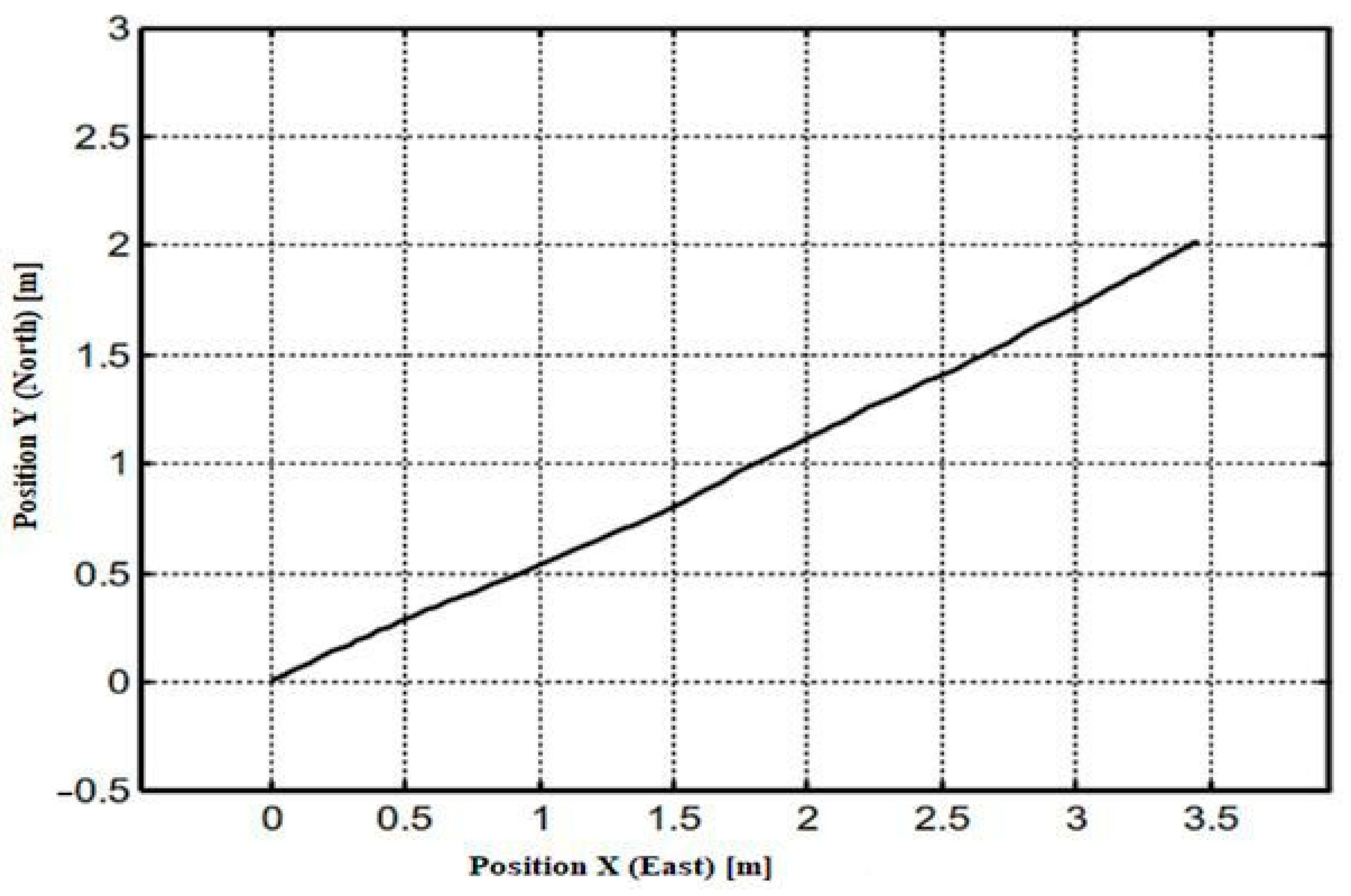
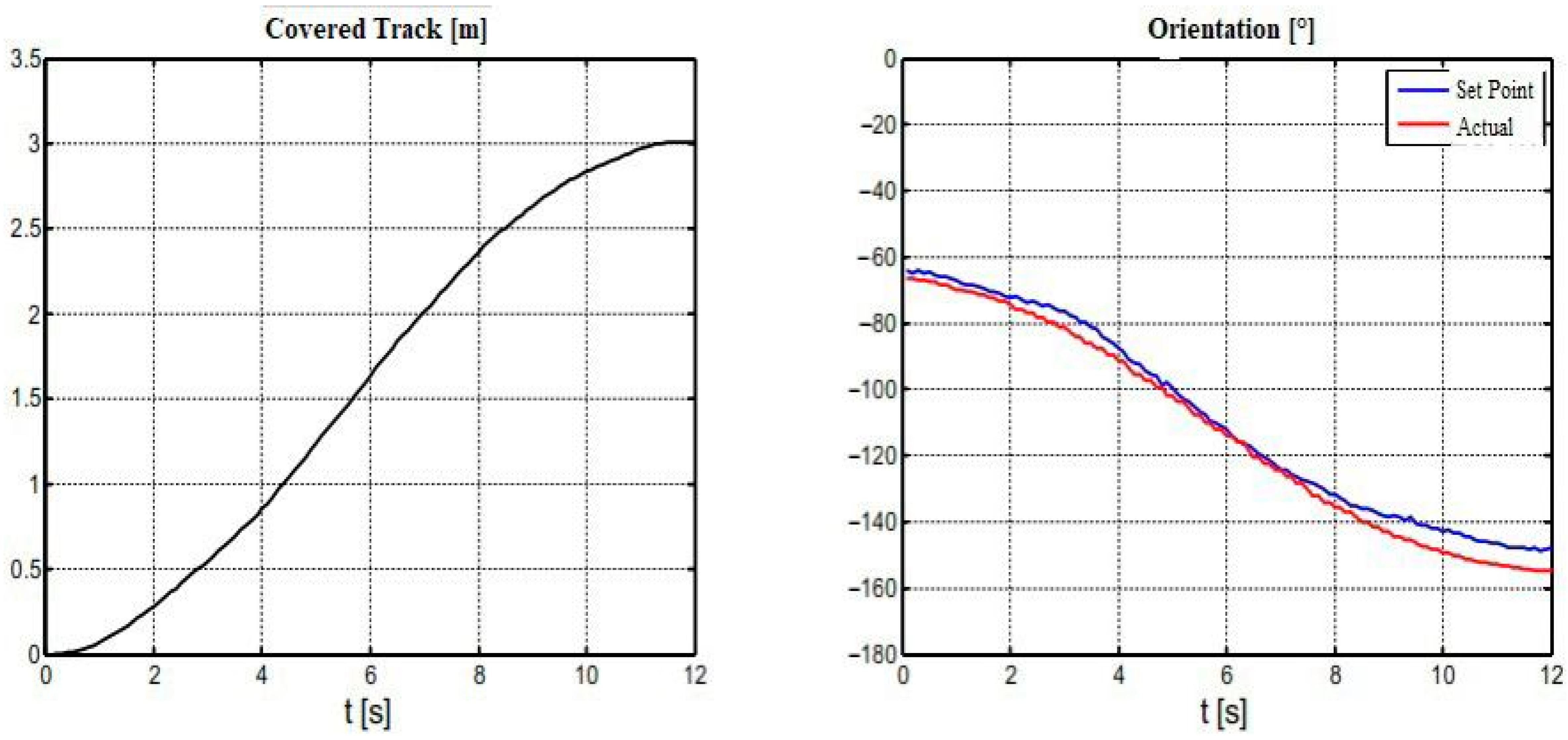
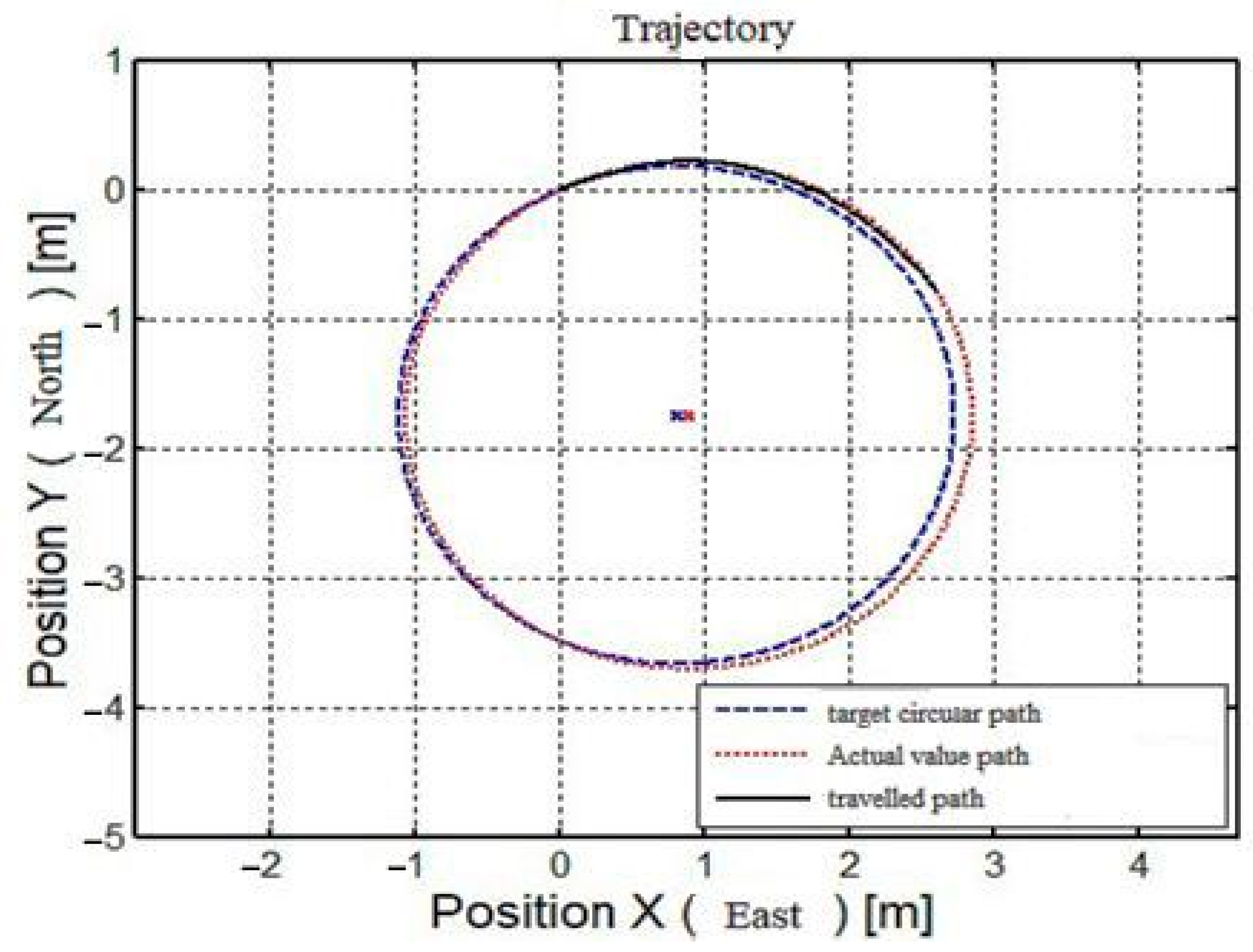
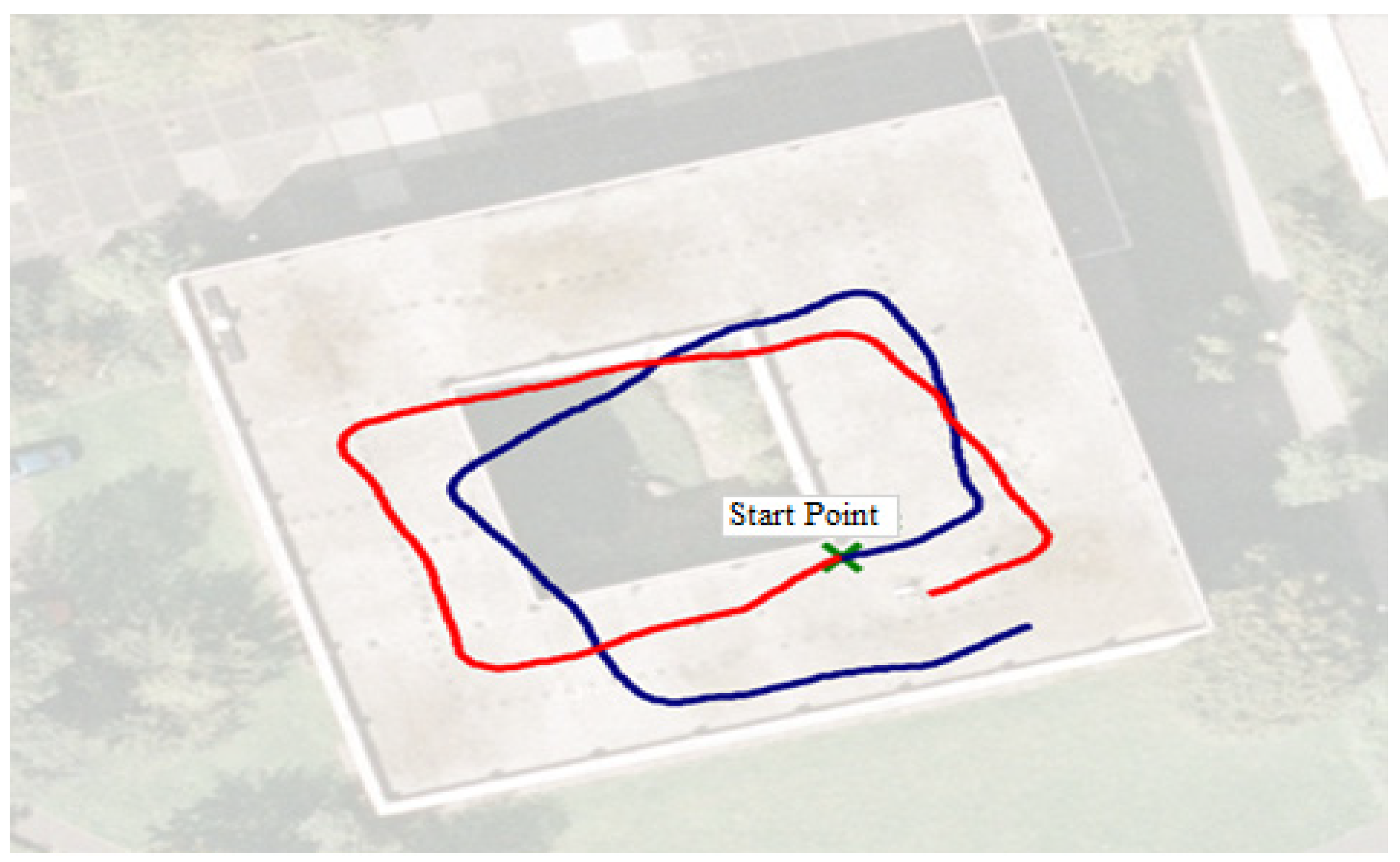
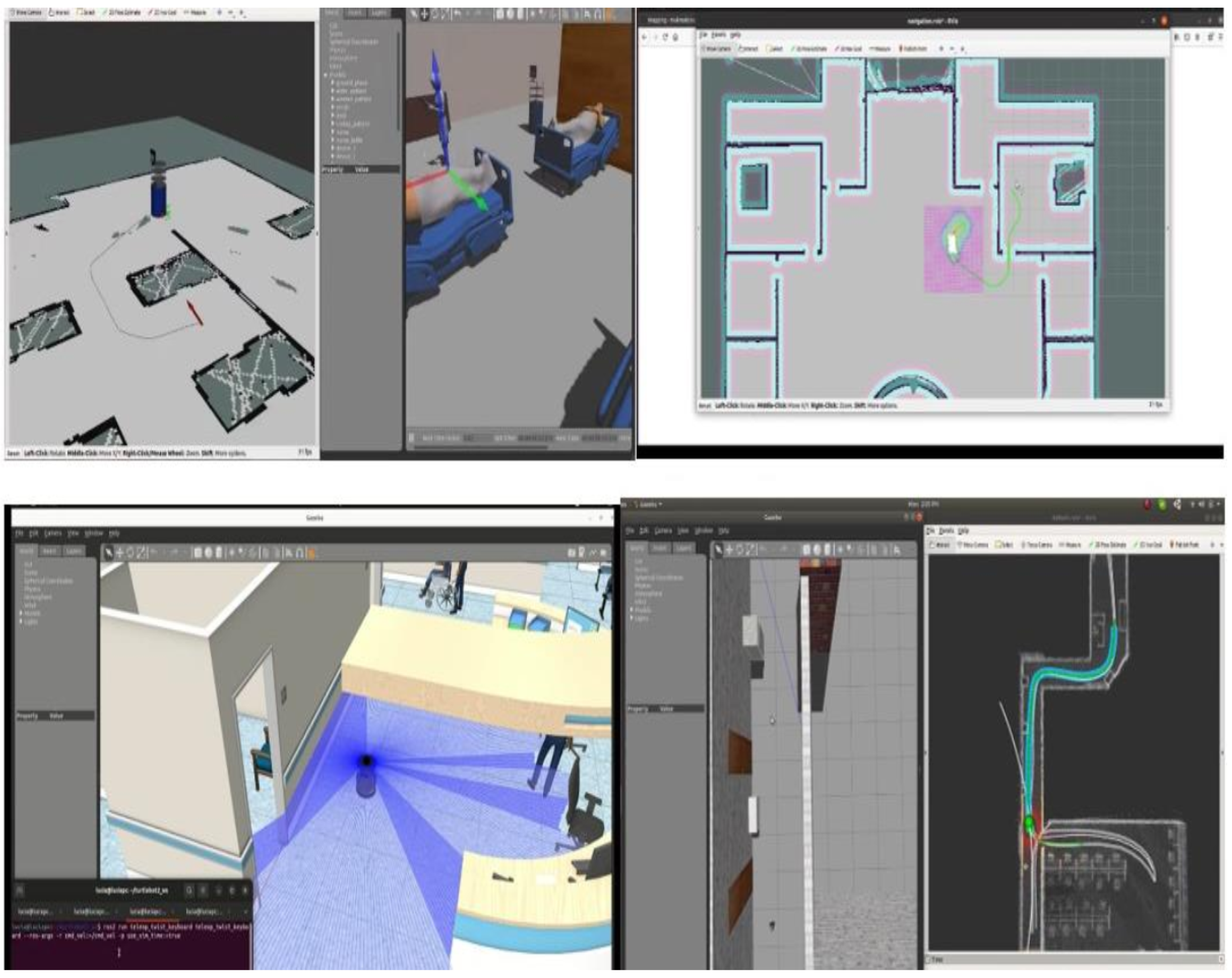
| Examples | Trial 1 | Trial 2 | Trial 3 | Mean |
|---|---|---|---|---|
| Distance (m)/Time (s) | Distance (m)/Time (s) | Distance (m)/Time(s) | Distance (m)/Time (s) | |
| 1st round | 8.67 m/92 s | 9.79 m/98 s | 9.13 m/95 s | 9.2 m/95 s |
| 2nd round | 9.89 m/90 s | 9.13 m/87 s | 8.13 m/88 s | 9.0 m/88 s |
| 3rd round | 9.13 m/98 s | 9.05 m/89 s | 9.05 m/75 s | 9.0 m/87 s |
| 4th round | 8.44 m/87 s | 9.84 m/72 s | 9.94 m/61 s | 9.3 m/73 s |
| Algorithms | Examples | Trial 1 | Trial 2 | Trial 3 | Mean |
|---|---|---|---|---|---|
| Distance (m)/Time (s) | Distance (m)/Time (s) | Distance (m)/Time (s) | Distance (m)/Time (s) | ||
| A-star | 1st round | 8.85 m/91 s | 9.79 m/99 s | 9.15 m/95 s | 9.25 m/95 s |
| 2nd round | 9.95 m/90 s | 9.15 m/87 s | 8.15 m/88 s | 9.10 m/88 s | |
| Developed | 1st round | 8.15 m/84 s | 8.85 m/89 s | 7.75 m/85 s | 8.25 m/86 s |
| 2nd round | 7.85 m/86 s | 7.55 m/87 s | 8.15 m/88 s | 7.85 m/87 s |
Disclaimer/Publisher’s Note: The statements, opinions and data contained in all publications are solely those of the individual author(s) and contributor(s) and not of MDPI and/or the editor(s). MDPI and/or the editor(s) disclaim responsibility for any injury to people or property resulting from any ideas, methods, instructions or products referred to in the content. |
© 2023 by the authors. Licensee MDPI, Basel, Switzerland. This article is an open access article distributed under the terms and conditions of the Creative Commons Attribution (CC BY) license (https://creativecommons.org/licenses/by/4.0/).
Share and Cite
Altalbe, A.A.; Shahzad, A.; Khan, M.N. Design, Development, and Experimental Verification of a Trajectory Algorithm of a Telepresence Robot. Appl. Sci. 2023, 13, 4537. https://doi.org/10.3390/app13074537
Altalbe AA, Shahzad A, Khan MN. Design, Development, and Experimental Verification of a Trajectory Algorithm of a Telepresence Robot. Applied Sciences. 2023; 13(7):4537. https://doi.org/10.3390/app13074537
Chicago/Turabian StyleAltalbe, Ali A., Aamir Shahzad, and Muhammad Nasir Khan. 2023. "Design, Development, and Experimental Verification of a Trajectory Algorithm of a Telepresence Robot" Applied Sciences 13, no. 7: 4537. https://doi.org/10.3390/app13074537
APA StyleAltalbe, A. A., Shahzad, A., & Khan, M. N. (2023). Design, Development, and Experimental Verification of a Trajectory Algorithm of a Telepresence Robot. Applied Sciences, 13(7), 4537. https://doi.org/10.3390/app13074537






